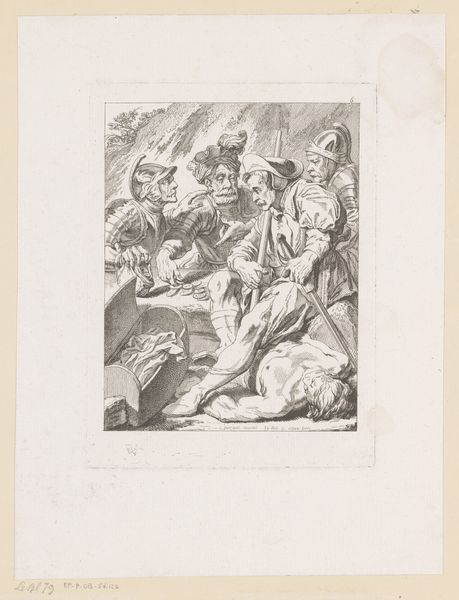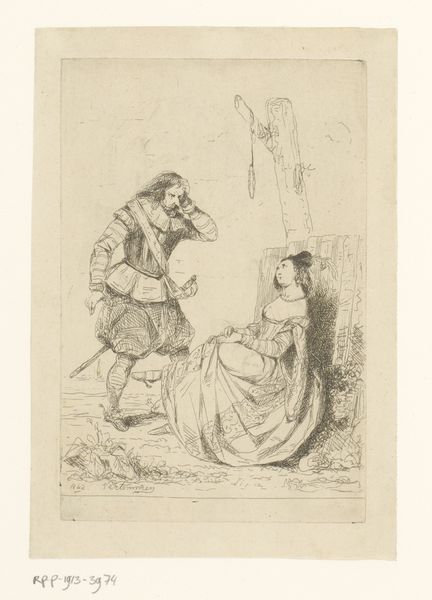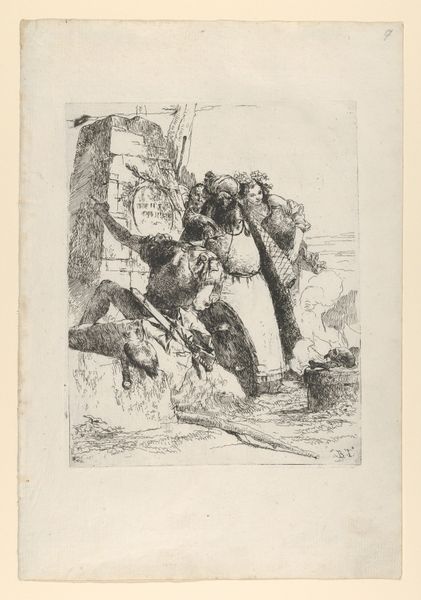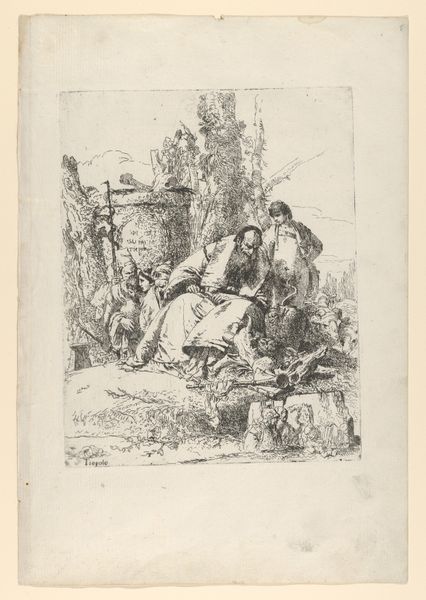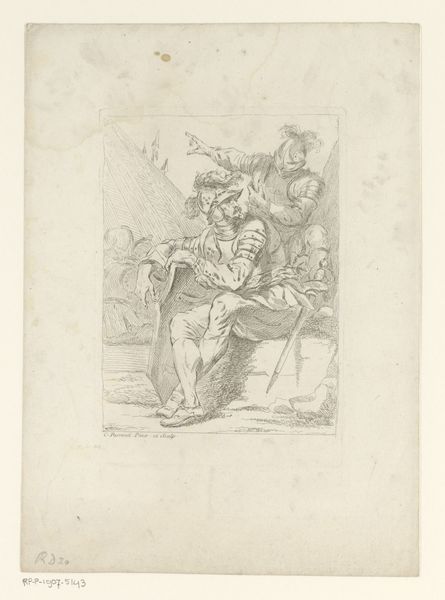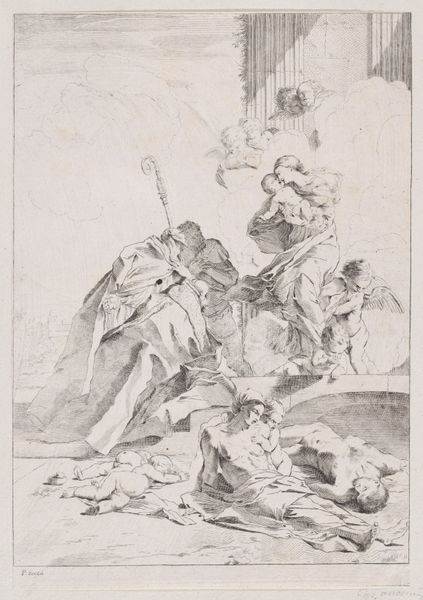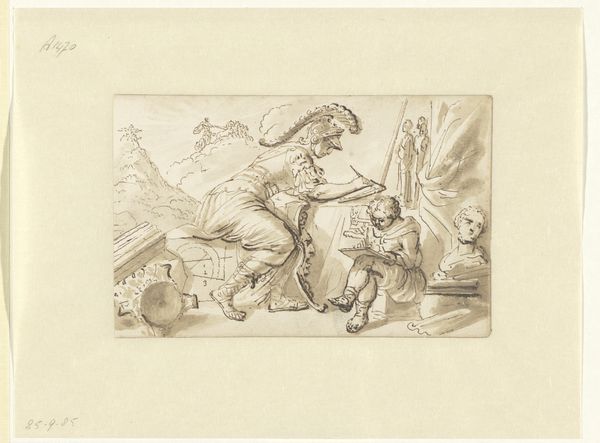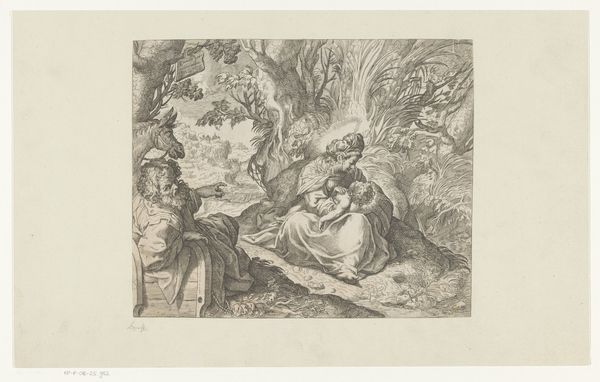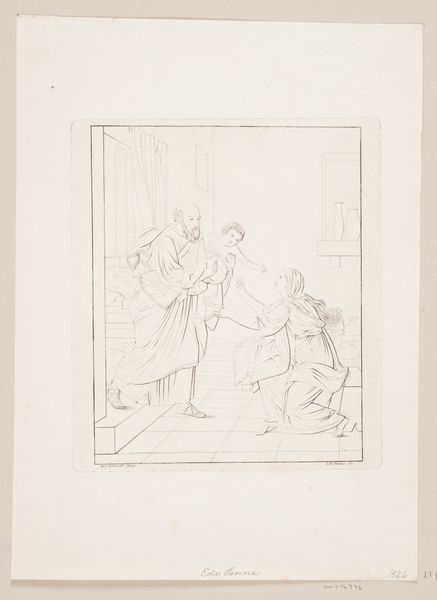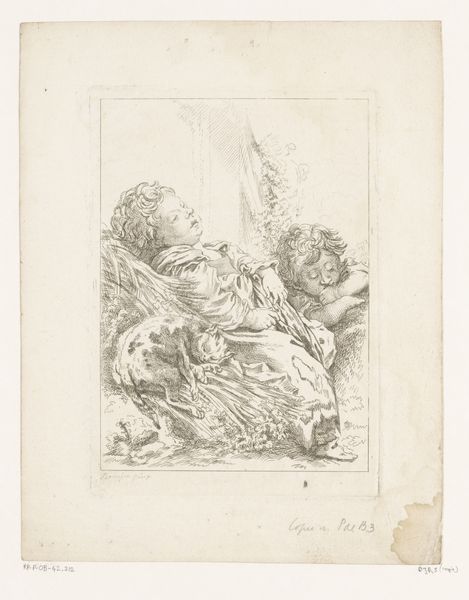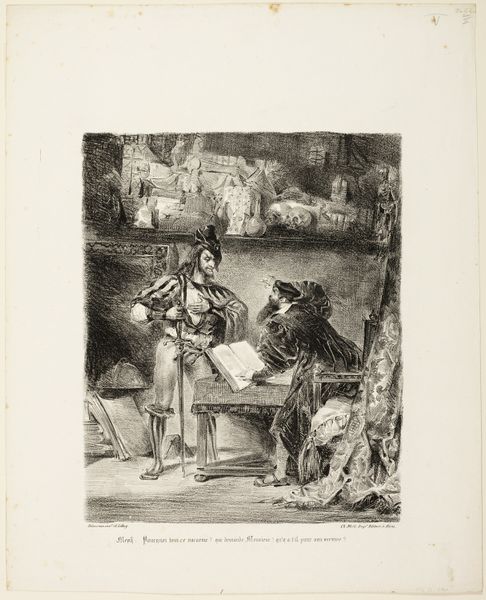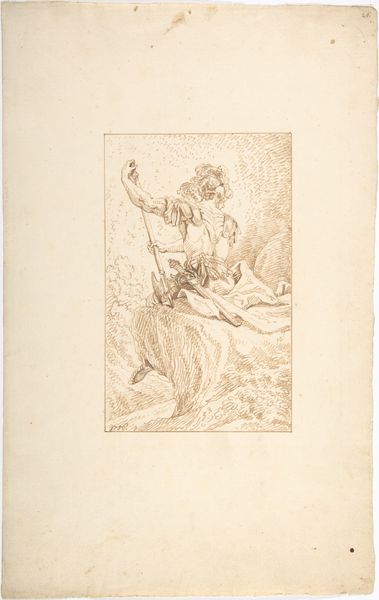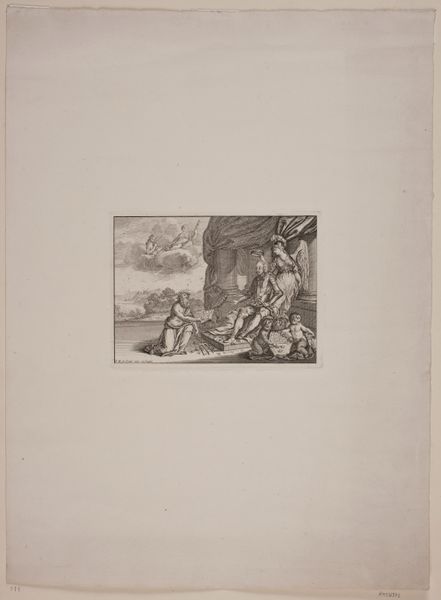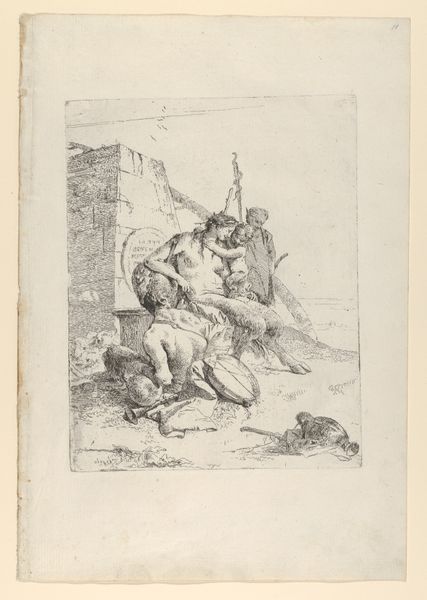
Dimensions: 160 mm (None) (bladmaal)
Curator: Looking at this piece, I feel… breathless. There's such an immediacy to it, almost unfinished, and yet it captures so much emotion. Editor: Exactly. What we are seeing is F. Hendriksen's Illustration for Carit Etlar's "Artist," made sometime between 1847 and 1875. It’s an etching, a drawing rendered as a print; very typical of the Romanticism he worked in. Curator: A damsel in distress, the swain rushing to her aid – it drips of Romantic drama, doesn’t it? She’s utterly swooned, and the snake isn't helping! Editor: The swooning figure has strong art historical precedents. From a psychoanalytic perspective, the snake is key. Its winding form connects earthly anxieties with what’s hidden in the verdant space, symbolizing danger but also a seductive transformation. That this scene is found in a “landscape” only heightens that frisson of danger and allure. Curator: Right? And his touch. See how gently the hero reaches towards her. The whole thing feels caught in time, like a fragment of a much bigger, passionate story. Editor: This single frame pulls us in as active readers, invested in what led to this precise moment and wondering about what follows this scene. Look too, at how Hendriksen is engaging with themes of narrative art and even history-painting to suggest how memory, desire, and social roles shaped visual art during his time. Curator: It's true, this drawing makes you really wonder what happens next, doesn't it? I think Hendriksen succeeds marvelously to invite us inside this brief instant of drama, and makes us question it with fresh eyes. Editor: In the end, that might be Hendriksen’s greatest trick, to give an artwork an unending appeal. We are not only the audience, but in considering its symbolism, are inducted as members of the world.
Comments
No comments
Be the first to comment and join the conversation on the ultimate creative platform.
